Taipan
Oxyuranus
The Most Venomous Snakes On Earth
Advertisement
Taipan Scientific Classification
- Kingdom
- Animalia
- Phylum
- Chordata
- Class
- Reptilia
- Order
- Squamata
- Family
- Elapidae
- Genus
- Oxyuranus
- Scientific Name
- Oxyuranus
Read our Complete Guide to Classification of Animals.
Taipan Conservation Status
Taipan Facts
- Fun Fact
- The Most Venomous Snakes On Earth
- Litter Size
- 12 to 24
- Habitat
- Deserts, floodplains, grasslands, savanna woodland, cane fields
View all of the Taipan images!
“Taipan is the Most Venomous Snakes On Earth”
It’s true that the taipan has fantastically potent venom, but it also benefits humans by eating vermin such as rats and mice. Found only in Australia and New Guinea, taipans are long snakes that can move fast, whether to escape danger or deliver a fatal bite. Amazingly, these super-charged predators are prey for other snakes such as the king brown snake and the mulga.

Four Amazing Facts About Taipans
Here are four facts about the taipan.
- The inland taipan is the most venomous snake on earth, and the coastal taipan is the third most venomous snake on earth. The second most venomous snake on earth is probably Pseudonaja textilis, the eastern brown snake, also found in Australia and New Guinea.
- The Central Ranges taipan was discovered in 2007 and became the first taipan to be discovered in over a century.
- Taipan is the name the Wik-mungkan people of Queensland, Australia give to this snake.
- The venom of the taipan has evolved to target warm-blooded animals such as rodents and marsupials.
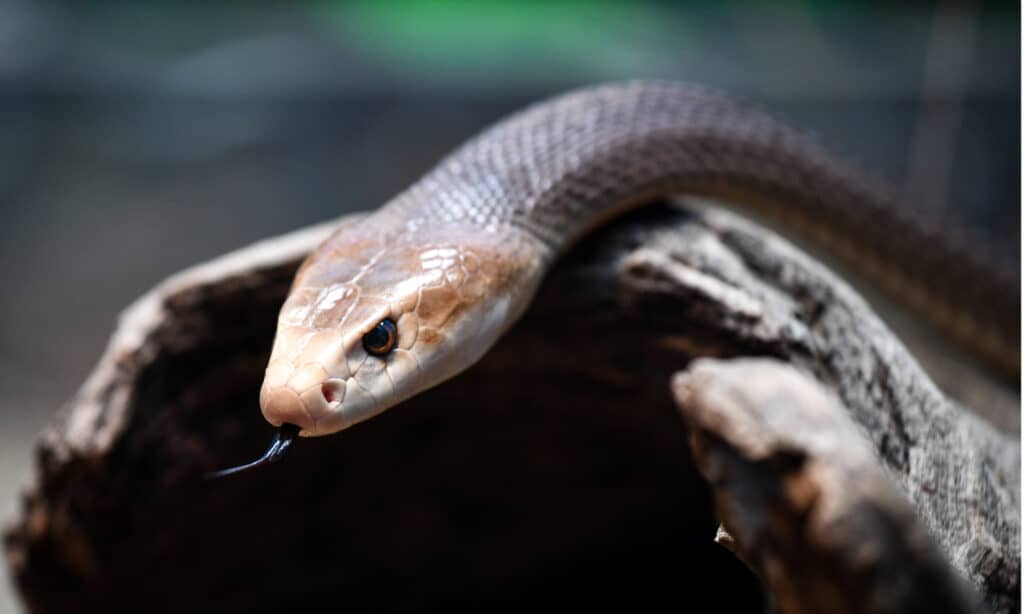
The coastal taipan snake’s head is wider than the rest of its body.
©iStock.com/ROBERT STYPPA
Where To Find Taipans
Depending on the species, taipans live in burrows or crevices in the deserts of western Australia, in semi-dry areas in the center of Australia, or in the woods and monsoon forests near the coasts of Australia or Papua New Guinea. The coastal taipan is especially fond of sugarcane fields where its rodent prey is abundant.
Scientific Name
The genus name for taipans is Oxyuranus. The real meaning of this name comes from the Greek oxys, which means “sharp” and ouranos, which means “the vault of heaven” and is also the origin word for the lovely blue planet Uranus. It refers to the needle-like structure at the top of the snake’s palate. Some mistakenly believe that Oxyuranus means “sharp-tailed” because oura is Latin for “tail.” But the snake does not have a sharp tail.
There are three species of taipan, O. scutellatus, O. temporalis and O. microlepidotus. Scutellatus means “saucer-shaped” in Latin. O. scutellatus has two subspecies:
- O.s. canni
- O.s. scutellatus
Temporalis means “temples of the head” in Latin, and microlepidotus means “small scales” in Greek.
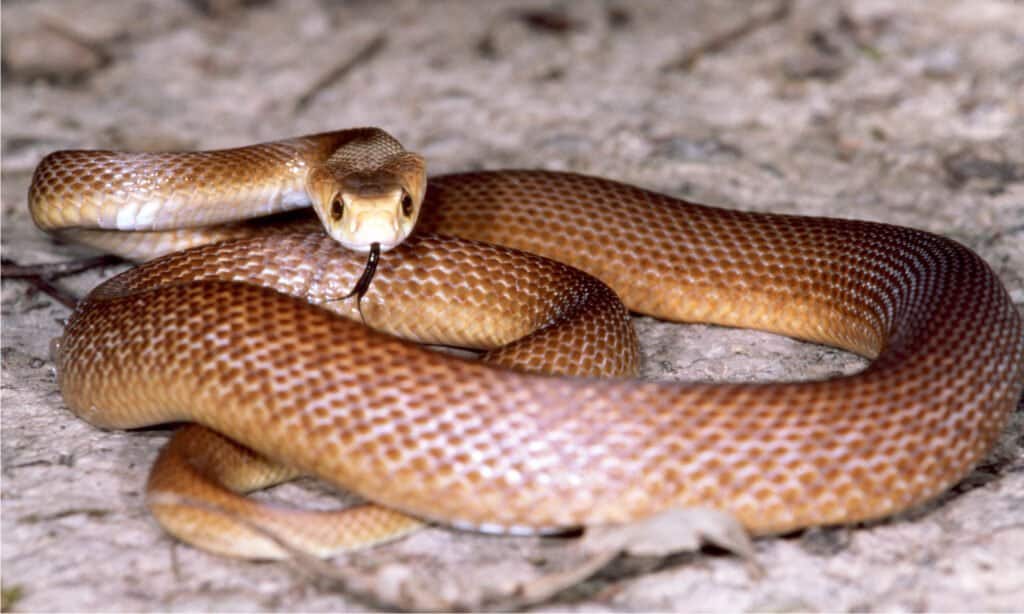
Coastal Taipan, a snake similar to the Central Ranges Taipan. The Central Ranges Taipan has a brown body with pale head.
©Ken Griffiths/Shutterstock.com
The Different Types of Taipan
There are three species of taipan.
- The coastal, or common taipan, Oxyuranus scutellatus, lives in a variety of habitats. These include sugarcane fields, woods, savannas, and monsoon forests. It is a long and fast snake that can grow over 9 feet in length. Its conservation status is least concern. The subspecies, Papuan taipan, O.s. canni, is found in the southern portion of the island of New Guinea.
- The central ranges taipan, Oxyuranus temporlis, was only recently discovered and is found in the deserts, shrublands, and grasslands and among the blue gum trees of western Australia and the Northern Territory. It too can grow over 9 feet in length, and though it seems rare its conservation status is the least concern.
- The inland taipan, Oxyuranus microlepidotus, lives in the hot and dry deserts of west and southwest Queensland, South Australia, New South Wales, and the Northern Territory. Because of the area’s climate, the snake spends much of the day hiding in burrows, sinkholes, or rock crevices. Though its status is also of the least concern, the inland snake, like other Australian snakes, is protected.
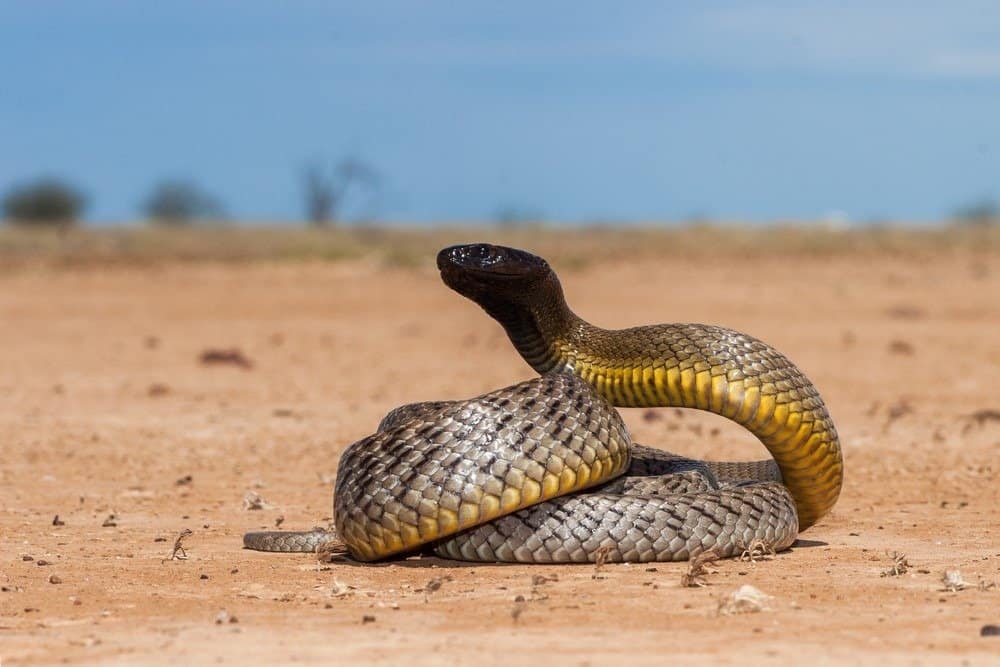
The Inland taipan is a different color that the coastal and central ranges taipans – and is adapted to desert life.
©iStock.com/Ken Griffiths
Evolution
Fossil records show that snakes first appeared during the Cretaceous period – although they often retained their hind limbs. The earliest true snake fossils come from the marine simoliophiids, the first being Hassiophis terasanctus, dated between 112 – 94 million years ago.

Scientists believe that snakes descended from lizards. Pythons and boas, the most primitive snakes, have vestigial hind limbs and some have remnants of a pelvic girdle appearing as horny projections.
Many modern snakes originated during the Paleocene alongside the radiation of mammals that occurred after the extinction of non-avian dinosaurs. The expansion of grasslands in North America led to a major radiation of snakes. During the Miocene, the number of snake species increased with the first vipers and elapids and the diversification of Columbridae.
How To Identify Taipans: Appearance and Description

A large taipan can grow to over 9 feet – and with great size comes a large load of venom.
©stefan seiden/Shutterstock.com
One of the reasons that taipans are so extraordinarily dangerous to humans is that they are quite large snakes. A large taipan can grow to over 9 feet in length and a snake that large can carry a large load of venom. Females are larger than males. Interestingly, the fangs are surprisingly small and don’t need to fold back into the mouth as is the case with some vipers. The fangs of the inland taipan, for example, are between 0.14 and 0.24 inches long.
Taipans can come in colors that range from brown to gray to light brownish-green to buff to beige. Once in a while, there may be a blue morph. Sometimes the scales are edged with black or yellow to create an appealing pattern. Not only this, the snake’s color changes with the seasons. They become lighter in color during the warm weather and darker during the cooler weather. Their ventral area is paler than the dorsal area.
At first glance, these snakes look alike, but they can be told apart by the number of scales along the edge of the mouth of the lower jaw if one is brave enough to count them.
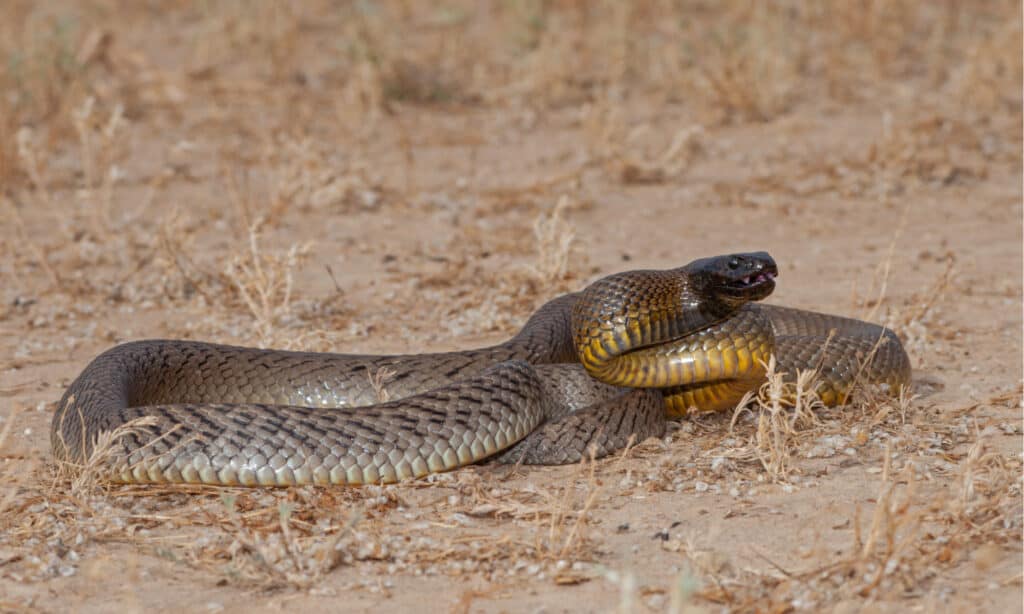
also known as Inland taipan, is known as the world’s most venomous and deadly snake.
©Ken Griffiths/Shutterstock.com
Venom: How Dangerous Are Taipans?
Taipans are among the most venomous snakes on earth. Of the three most venomous species, two of them are taipans. Their venom was made to subdue warm-blooded animals and contains a deadly stew of neurotoxins that attack the nervous system, hemotoxins that attack the blood, and myotoxins that attack the muscles. Taipan venom also stops the blood from clotting, which can lead to fatal brain bleeds and may also contain toxins that destroy the kidneys. The death rate of an untreated taipan bite is about 80 percent, and even if the victim doesn’t die, they can suffer severe and long-lasting injury and impairment.
Diet
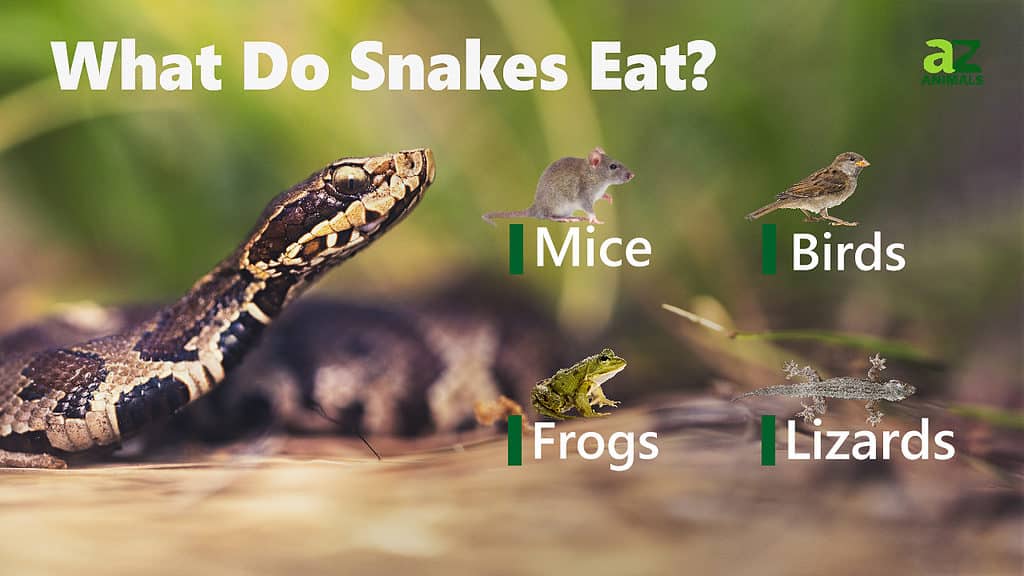
Despite the lethality of its venom, taipans are beneficial in that they love to eat rats and mice, especially those that infest sugarcane fields. Taipans also eat birds and little marsupials such as kultarrs and bandicoots.
Behavior and Humans

After a taipan finds prey, it bites it several times and waits patiently for it to die before consuming it.
©Ken Griffiths/Shutterstock.com
Taipans are usually active during the day, but if the temperature becomes too hot, they will hunt in the evening or at night when it’s cooler. Their hunting strategy is to find prey, bite it a few times, then wait for it to die of the venom. Then, the snake uses its forked tongue to pick up the prey’s chemical trail. When it finds the body, it swallows it whole. The strategy of quickly envenomating prey protects the snake from injury from sharp-toothed creatures such as plague rats. But as with many venomous animals in Australia, the snake’s venom is far more potent than is needed. Humans are not the snake’s prey, but a bite from a coastal taipan can kill 56 humans.
Generally, taipans are shy and prefer to avoid threats by trying to get away from them, but they will attack and bite if they are cornered. The coastal taipan has a reputation for being bad-tempered, but it too would rather avoid danger. Because of this, taipan bites are rare.
Taipans mate in the spring, which in Australia and New Guinea is from August to December. The males engage in combat where they try to force their rival’s head down to the ground. These bouts can last for hours until one male gives up and slithers away. The male then mates with the interested female, and this too can take some hours. She may also mate with two or more males during the breeding season.

Coastal taipan lay from 3 – 20 eggs.
©iStock.com/Ken Griffiths
Two months later, she’ll lay between 12 and 24 eggs. The older and larger she is, the more eggs she’ll lay. The female leaves the eggs after she’s laid them and may wait a couple more years before she mates again. The baby snakes hatch after about two months and grow very quickly. Males are ready to breed when they’re about 16 months old, while females are ready when they’re about two years old. The lifespan of this snake is between 10 and 15 years, but the Australia Zoo had an inland taipan that lived to be over 20.
View all 133 animals that start with TTaipan FAQs (Frequently Asked Questions)
How many kinds of taipan are there?
There are three species of taipan. They are the common taipan, which has two subspecies, the inland taipan, and the central ranges taipan.
How fast are taipan snakes?
Taipan are surprisingly fast snakes for their size, though scientists haven’t measured their exact speed.
Where are taipans found?
Taipans are found in Australia and New Guinea.
Is the taipan the most venomous snake?
It is indeed considered the most venomous snake alive.
How poisonous is a taipan?
The inland taipan is so poisonous that a bite can kill 100 adult humans at a time.
Is taipan aggressive?
Taipans are not really aggressive, though they will defend themselves if they are cornered.
Is a taipan a black mamba?
A taipan is not a black mamba. Black mambas are found in Africa and taipan snakes are found in Australia and New Guinea. Black mambas are also of a different genus than taipans. They belong to the Dendroaspis genus.
Thank you for reading! Have some feedback for us? Contact the AZ Animals editorial team.
Sources
- Wikipedia / Accessed May 3, 2022
- The Reptile Database / Accessed May 3, 2022
- Australian Museum / Accessed May 3, 2022
- Billabong Sanctuary / Accessed May 3, 2022
- Kidadl / Accessed May 3, 2022
- Australian Museum / Accessed May 3, 2022


















